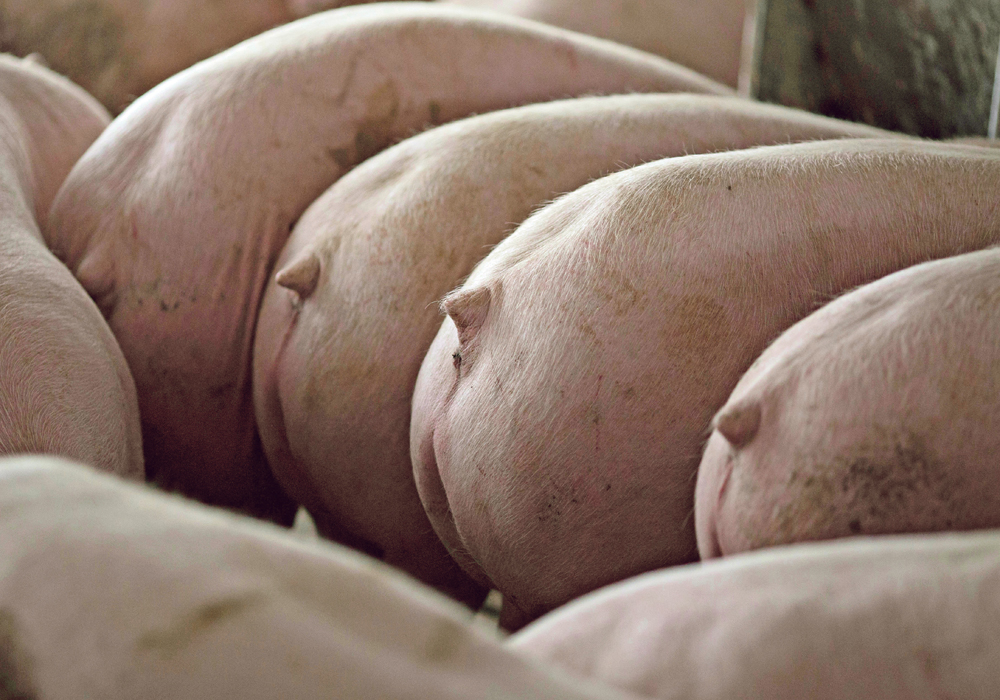When we think of dogs in agriculture the first image might be a shepherd guarding a flock of sheep.
But in Canada right now a more important canine is the stalwart sniffer dog at airports, protecting the nation’s multibillion-dollar pork industry.
The federal government is engaging admirably to protect this country’s herd from the threat of African swine fever (ASF), the hog disease that has no cure or vaccine and is growing worldwide, particularly in Asia.
Ottawa has committed $31 million to provide 24 detector dog teams over five years, bringing the total number of teams to 39 in the Food, Plant and Animal Detector Dog Service. They will help sniff out illegally imported meat at airports and other points of entry.
Read Also

Critical growing season is ahead for soybeans
What the weather turns out to be in the United States is going to have a significant impact on Canadian producers’ prices
It is also raising public awareness about the danger of travellers bringing meat into the country and working on ways to ensure that ASF does not enter the country through infected feed ingredients.
Canada will host in Ottawa the first international ASF forum at the end of April, bringing together our North American and European partners and international animal health authorities.
The interest and action must not end there because the potential damage of ASF entry into Canada would be devastating to producers and a major hit to the economy, threatening 100,000 jobs and $24 billion in economic activity linked to pork production.
The disease outbreak in China is likely doing far more damage than its government is letting on, although even the official story is sobering. China’s Agriculture Ministry data for February shows its hog herd down 16.6 percent from a year ago. On a month-to-month basis, the pig herd was down 5.4 percent and the sow herd five percent from January, so the liquidation appears to be gaining momentum.
Betsy Freese, executive editor of Successful Farming in the United States, recently returned from a tour of China with 25 members of the Iowa Farm Bureau. The headline on her story is, Why You Can’t Believe What China Says About African Swine Fever.
While the government in Beijing has taken many actions to control the spread of the disease and says it is making progress, U.S. embassy officials in China and people at a U.S.-owned feed company say it will never be controlled, Freese reports. It has spread to Vietnam and will likely soon wind up in other Southeast Asian countries.
The disease is fatal to pigs but is not a danger to humans. China’s government is working hard to calm consumer fears but the feed manufacturer told Freese pork consumption is falling.
The culling of Chinese herds to try to control the disease had pushed more pork on to the market, driving prices down and hurting the revenue of even producers without the disease.
But the culling has now reduced production enough that the market is starting to climb back up.
A March 11 Reuters story said hog prices in China had risen to a 14-month high.
Feedstuffs Magazine, reporting from the American Association of Swine Veterinarians, states in a story posted March 11 that Brett Stuart, president of Global AgriTrends, also says that his sources tell him the situation is much worse than the official response.
“I think conservatively, production in China will be down 30 percent once the liquidation stops,” he said in the Feedstuffs article by reporter Krissa Welshans.
Considering the vast size of China’s herd, the largest in the world, 30 percent would be an enormous number.
The question on every pork exporter’s mind is when or if China would be forced to start importing a lot more pork. Freese said government officials told her the country has lots of alternative protein, including poultry, and that they would like to see citizens, who are the world’s largest per capita pork consumers, reduce red meat consumption anyway.
But a hint of the opportunity came March 14 when the U.S. Department of Agriculture weekly export report revealed China had bought almost 24,000 tonnes of pork in the week ended March 7 despite import tariffs of 62 percent on U.S. pork imposed in response to the U.S. tariffs on steel and other Chinese products.
That was the third largest weekly buy since the USDA began the report in 2013.
Canada does not issue weekly export reports and the latest monthly data is for December.
News of the American sale caused Chicago hog futures to soar the daily limit two days straight. For the week to March 15, the Chicago hog futures rose 13.7 percent.
We still don’t know if China will import huge amounts of pork, but certainly the potential is there.
Yet it would likely evaporate instantly if the disease gets into North America. As well, Canada’s existing global export market worth $4 billion would be threatened.
So the public awareness campaign, the sniffer dogs and exemplary on-farm sanitation safeguards are all critical.
The government must also push forward working with other countries to recognize designated disease-control zones so that if ASF or some other disease does enter Canada, the trade impact will be limited to the region with the problem.
And the focus of concern should not be limited to Asia. ASF is in Eastern Europe and Russia. A Western Producer story recently noted concerns about uncooked pork imports from Poland, a country with reported cases of ASF. While not a human health issue, the meat presents a small but worrisome vector for potential entry of the disease to Canada’s herd.
With so much at stake we must be like the ever vigilant guardian dogs watching over their flocks.

















